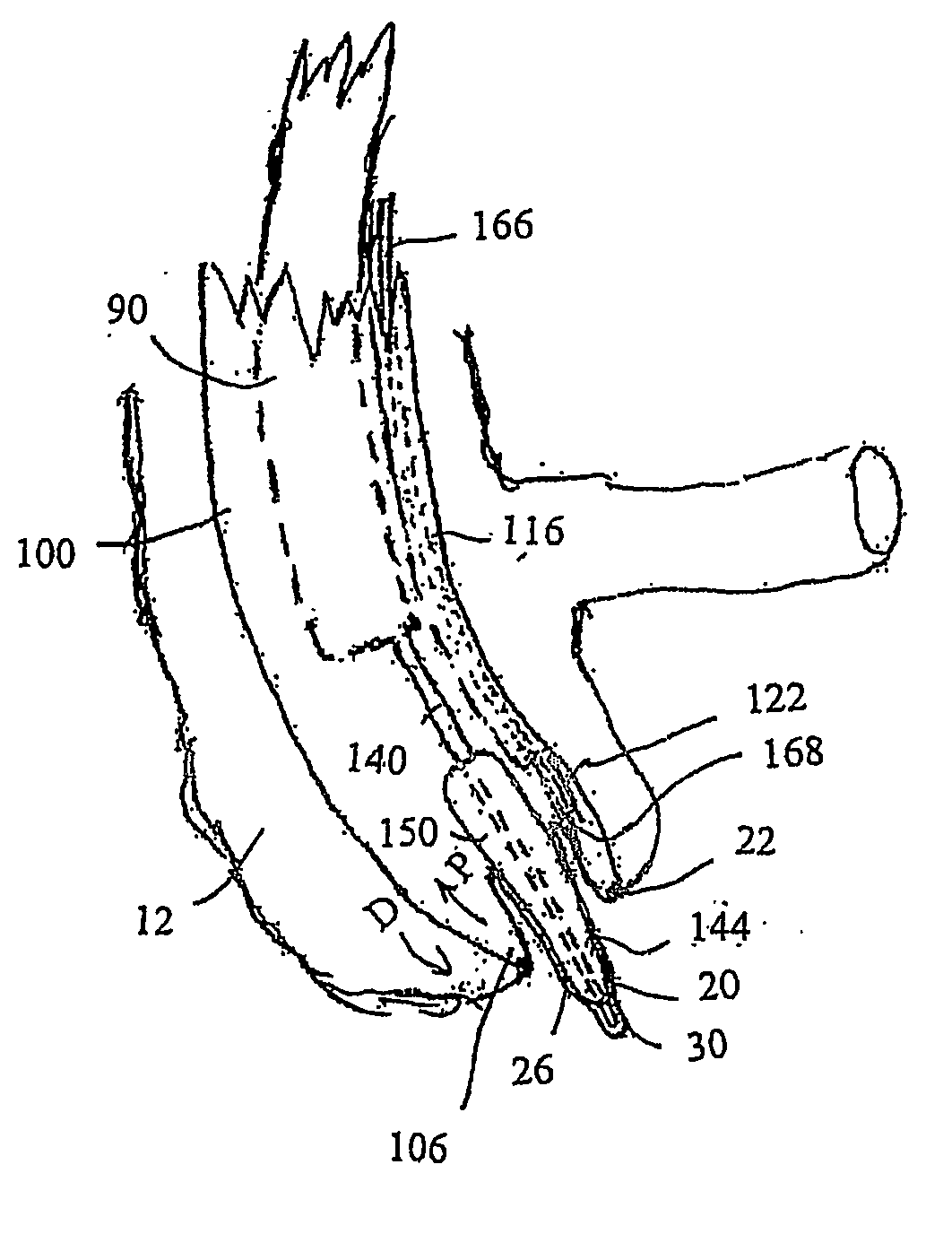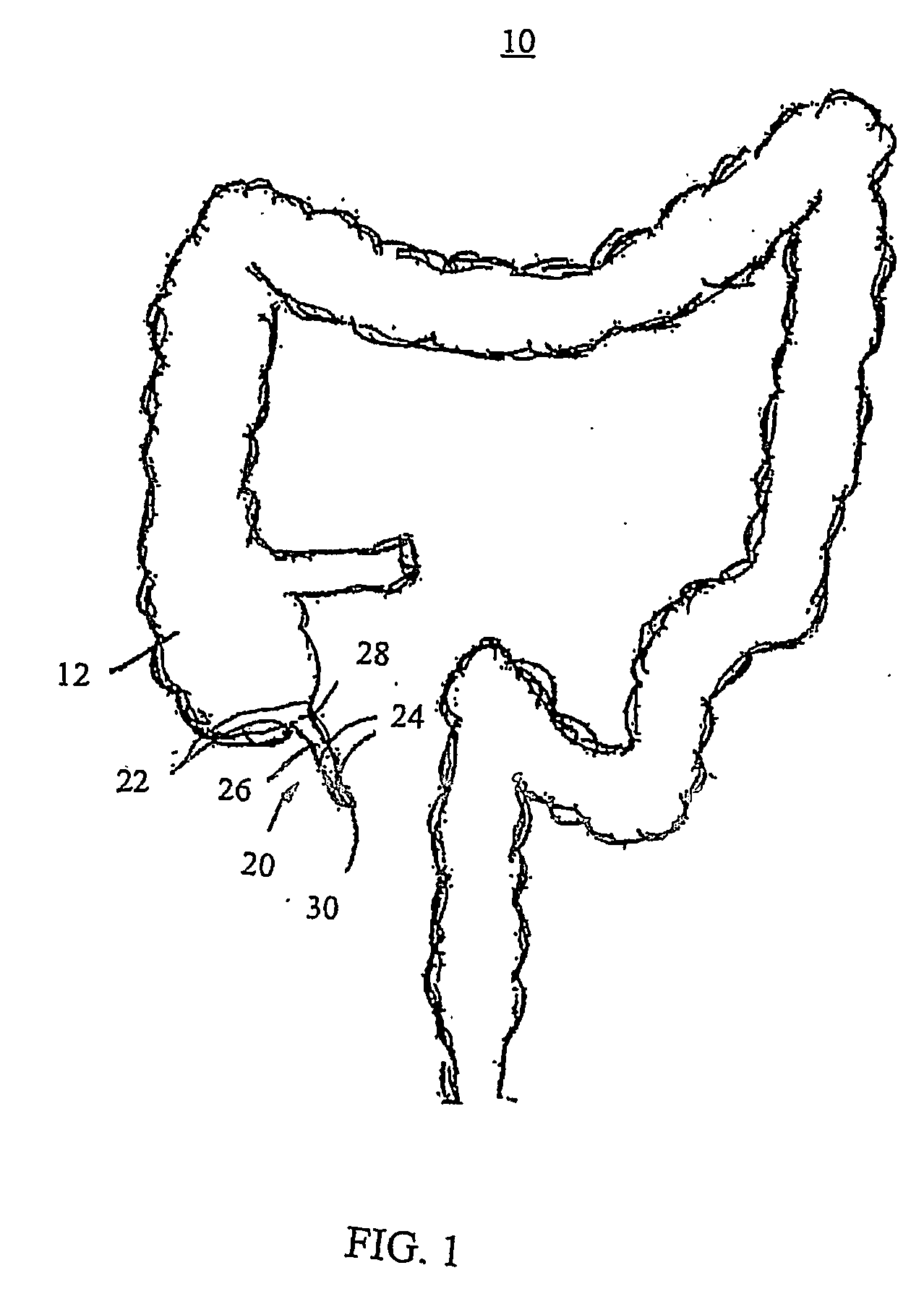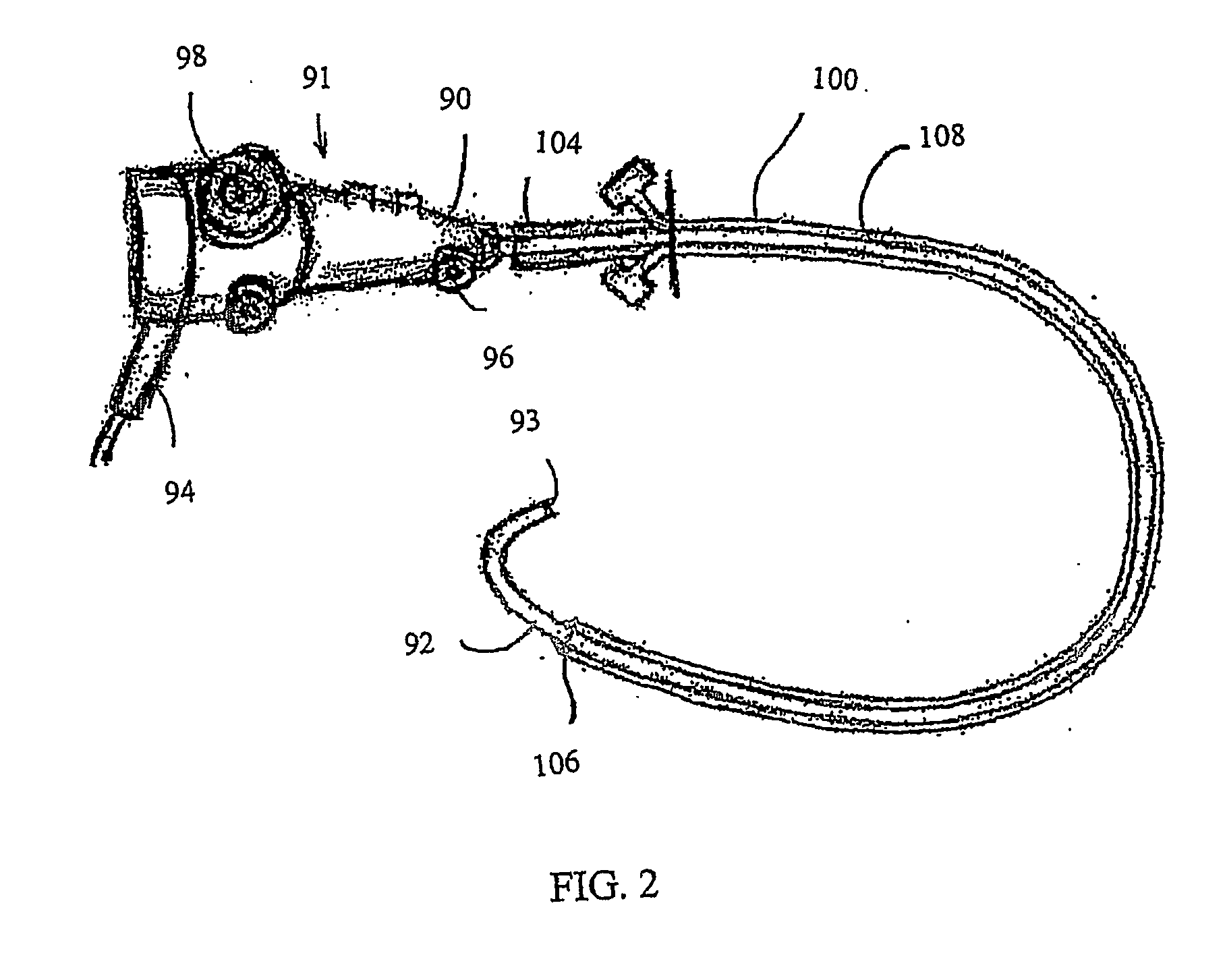Apparatus and method for colonoscopic appendectomy
- Summary
- Abstract
- Description
- Claims
- Application Information
AI Technical Summary
Benefits of technology
Problems solved by technology
Method used
Image
Examples
Embodiment Construction
[0094] For a better understanding of the invention, the following detailed description refers to the accompanying drawings, wherein preferred exemplary embodiments of the present invention are illustrated and described.
[0095] A vermiform appendix is a narrow, worm-shaped tube, which usually extends from the posteromedial wall of a cecum, about 2 cm below the ileocecal valve, and may occupy different positions. A typical colon 10 and a vermiform appendix 20 is illustrated in FIG. 1.
[0096] As shown in FIG. 1, the vermiform appendix 20 extends from a base 22 which is connected to the cecum 12. The vermiform appendix 20 includes interior walls 24 defining a central lumen 26 extending from an orifice 28 at the base 22 to a distal tip 30 of the vermiform appendix 20.
[0097]FIG. 2 illustrates a perspective view of a colonoscope 90 and a tubular element 100. The tubular element 100, preferably an overtube, is flexible and includes a proximal end 104 for location externally of a colon, a d...
PUM
 Login to View More
Login to View More Abstract
Description
Claims
Application Information
 Login to View More
Login to View More - R&D
- Intellectual Property
- Life Sciences
- Materials
- Tech Scout
- Unparalleled Data Quality
- Higher Quality Content
- 60% Fewer Hallucinations
Browse by: Latest US Patents, China's latest patents, Technical Efficacy Thesaurus, Application Domain, Technology Topic, Popular Technical Reports.
© 2025 PatSnap. All rights reserved.Legal|Privacy policy|Modern Slavery Act Transparency Statement|Sitemap|About US| Contact US: help@patsnap.com



